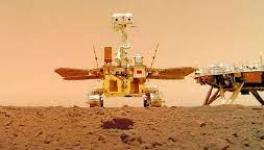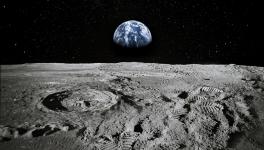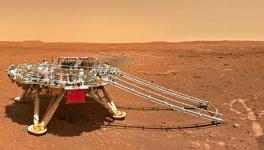Moon Rocks Collected by Chinese Mission Have Ignited Research, New Findings
Chang'e 5, the moon mission of China, was launched on November 23, 2020. The mission was to collect rock and dust samples from the moon's surface, and in December, the space capsule, after successfully collecting 2 kg of rock samples, made its return journey to Earth. The samples were collected from the site on the moon known as Oceanus Procellarum. Undertaken by the CNSA (Chinese National Space Administration), the Chang'e 5 mission attained the sophistication level. It became a landmark when it robotically drilled into the lunar surface and collected the sample. Such robotic operations in lunar missions were not visible in previous missions. The last lunar sample collecting mission proven successful was that of Soviet Russia's Luna 24 back in 1976.
The sophisticated Chinese lunar mission has sparked research on extra-terrestrial rocks both in China and outside. Experts are hoping that we may get new information about the solar system. Reportedly, about a half dozen studies have been published, representing research on the samples collected and returned by Chang'e 5. In addition, the Lunar And Planetary Science Conference in Houston held last week also witnessed the presentation of nearly a dozen studies.
Clive Neal, a geoscientist at the University of Norte Dame, Indiana, said about the conference, "There are a lot of young Chinese researchers getting involved. Several postgraduate researchers and students presented work on the lunar samples at the conference in Houston."
He added, "The rocks are exciting because they represent a window into a very different era of lunar magmatism compared with those gathered previously." Clive Neal has also worked on Chang'e -5 lunar samples in collaboration with China.
Last year the China National Space Administration granted several research projects in China. About 17.5 grams of samples in powdered and solid forms were distributed to 31 scientific projects selected from 85 applications. There were also other rounds of applications afterwards.
The first research team focused on deciphering the age of the moon rocks, and on October 7 last year, the age of the basalts (the moon sample) was reported to be 1.96 billion years. Just two weeks later, another team of researchers came out with a slightly different age of the samples, and the sample was reported to be 2 billion years old. The results suggested that the moon was volcanically active even a billion years later than the rocks from the Apollo mission (NASA, USA) suggested.
It was thought that radioactive elements like thorium found in the moon's mantle could have led to volcanism. But one study by the IGG (Institute of Geology and Geophysics), Chinese Academy of Sciences, Beijing, claimed that a high level of radioactive elements was not the source of the volcanism.
The other possibility of the lunar volcanism was thought to be the presence of abundant water at the mantle of the moon, which can reduce the temperature to such a level that the materials melt and the magma (the molten or semi-molten material from which igneous rocks were formed) could erupt like a volcano. However, this thought was also rejected by the findings of another study, also conducted at IGG. This study found that lunar rocks probably had formed from a dry source.
As of now, there is no concrete explanation of the lunar volcanism that was confirmed by studies on the lunar samples.
"We're exploring all possibilities. It's a good opportunity for me and many other Chinese scientists interested in stretching their field," commented Ming Tang, a geochemist at Peking University, Beijing. Notably, Tang had received two tiny grains of basaltic rock, and studies are going on them to understand better the conditions under which they were formed in the moon.
Experts hope that the efforts of many scientists to solve the mystery could also lead to discovering many other insights about the moon.
Get the latest reports & analysis with people's perspective on Protests, movements & deep analytical videos, discussions of the current affairs in your Telegram app. Subscribe to NewsClick's Telegram channel & get Real-Time updates on stories, as they get published on our website.

















